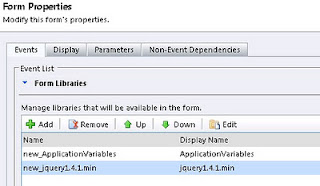We can find a nice code on status changes
here. I tried to make it more generalised as below and it works for me.
SetStateRequest = function (_entityname, entityid, _state, _status)
{
var requestMain = ""
requestMain += "<s:Envelope xmlns:s=\"http://schemas.xmlsoap.org/soap/envelope/\">";
requestMain += " <s:Body>";
requestMain += " <Execute xmlns=\"http://schemas.microsoft.com/xrm/2011/Contracts/Services\" xmlns:i=\"http://www.w3.org/2001/XMLSchema-instance\">";
requestMain += " <request i:type=\"b:SetStateRequest\" xmlns:a=\"http://schemas.microsoft.com/xrm/2011/Contracts\" xmlns:b=\"http://schemas.microsoft.com/crm/2011/Contracts\">";
requestMain += " <a:Parameters xmlns:c=\"http://schemas.datacontract.org/2004/07/System.Collections.Generic\">";
requestMain += " <a:KeyValuePairOfstringanyType>";
requestMain += " <c:key>EntityMoniker</c:key>";
requestMain += " <c:value i:type=\"a:EntityReference\">";
requestMain += " <a:Id>" + entityid + "</a:Id>";
requestMain += " <a:LogicalName>" + _entityname + "</a:LogicalName>";
requestMain += " <a:Name i:nil=\"true\" />";
requestMain += " </c:value>";
requestMain += " </a:KeyValuePairOfstringanyType>";
requestMain += " <a:KeyValuePairOfstringanyType>";
requestMain += " <c:key>State</c:key>";
requestMain += " <c:value i:type=\"a:OptionSetValue\">";
requestMain += " <a:Value>" + _state + "</a:Value>";
requestMain += " </c:value>";
requestMain += " </a:KeyValuePairOfstringanyType>";
requestMain += " <a:KeyValuePairOfstringanyType>";
requestMain += " <c:key>Status</c:key>";
requestMain += " <c:value i:type=\"a:OptionSetValue\">";
requestMain += " <a:Value>" + _status + "</a:Value>";
requestMain += " </c:value>";
requestMain += " </a:KeyValuePairOfstringanyType>";
requestMain += " </a:Parameters>";
requestMain += " <a:RequestId i:nil=\"true\" />";
requestMain += " <a:RequestName>SetState</a:RequestName>";
requestMain += " </request>";
requestMain += " </Execute>";
requestMain += " </s:Body>";
requestMain += "</s:Envelope>";
var req = new XMLHttpRequest();
req.open("POST", _getServerUrl(), false)
// Responses will return XML. It isn't possible to return JSON.
req.setRequestHeader("Accept", "application/xml, text/xml, */*");
req.setRequestHeader("Content-Type", "text/xml; charset=utf-8");
req.setRequestHeader("SOAPAction", "http://schemas.microsoft.com/xrm/2011/Contracts/Services/IOrganizationService/Execute");
var successCallback = null;
var errorCallback = null;
req.onreadystatechange = function () { SetStateResponse(req, successCallback, errorCallback); };
req.send(requestMain);
}
SetStateResponse = function (req, successCallback, errorCallback)
{
if (req.readyState == 4)
{
if (req.status == 200)
{
if (successCallback != null)
{ successCallback(); }
}
else
{
errorCallback(SDK.SAMPLES._getError(req.responseXML));
}
}
}
Also need below two supportive methods.
_getServerUrl = function ()
{
var OrgServicePath = "/XRMServices/2011/Organization.svc/web";
var serverUrl = "";
if (typeof GetGlobalContext == "function")
{
var context = GetGlobalContext();
serverUrl = context.getServerUrl();
}
else
{
if (typeof Xrm.Page.context == "object")
{
serverUrl = Xrm.Page.context.getServerUrl();
}
else
{ throw new Error("Unable to access the server URL"); }
}
if (serverUrl.match(/\/$/))
{
serverUrl = serverUrl.substring(0, serverUrl.length - 1);
}
return serverUrl + OrgServicePath;
}
_getError = function (faultXml)
{
var errorMessage = "Unknown Error (Unable to parse the fault)";
if (typeof faultXml == "object")
{
try
{
var bodyNode = faultXml.firstChild.firstChild;
//Retrieve the fault node
for (var i = 0; i < bodyNode.childNodes.length; i++)
{
var node = bodyNode.childNodes[i];
if ("s:Fault" == node.nodeName)
{
for (var j = 0; j < node.childNodes.length; j++)
{
var faultStringNode = node.childNodes[j];
if ("faultstring" == faultStringNode.nodeName)
{
errorMessage = faultStringNode.text;
break;
}
}
break;
}
}
}
catch (e) { };
}
return new Error(errorMessage);
}
Few examples I tried;
Deactivating an account -> SetStateRequest("account", _accountid, 1, 2)
Changing a Salesorder to submitted state -> SetStateRequest("salesorder", _salesorderid, 1, 3)
Disqualifying a lead with reason "No longer interested" -> SetStateRequest("lead", _leadid, 2, 6)
Anyway, still I don’t know whether this works for all the entities... but so far so good :-)





